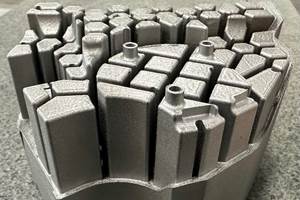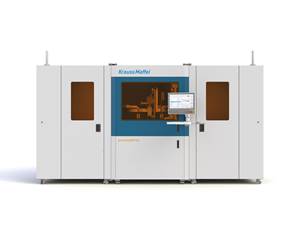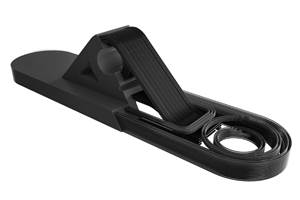Reshoring Trend: Fading or Going Strong?
RESHORING
One study says it’s over, another source says it still has legs.
The release of a new study by global consulting company A.T. Kearney has spurred debate on the degree to which U.S. manufacturing is benefitting from the widely heralded “reshoring” trend. In December, Chicago-based A.T. Kearney released the results of its second-annual U.S. Reshoring Index, which it says revealed that “reshoring of manufacturing operations to the U.S. failed to keep up with offshoring” for the fourth straight year. The consulting company said the Index dropped to -115 for 2015, down from -30 for 2014, which represents the largest year-over-year decrease in the last 10 years.
A.T. Kearney’s U.S. Reshoring Database, which holds roughly 700 reshoring cases that have been announced over the last five years, is forecasting only around 60 reshoring cases for 2015, which is a considerable drop from 2013 (210 cases) and 2014 (208 cases).
According to A.T. Kearney, the data suggest that the widely predicted reshoring trend seems to be over before it started. “The U.S. Reshoring phenomenon, once viewed by many as the leading edge of a decisive shift in global manufacturing, may actually have been just a one-off aberration,” says Patrick Van den Bossche, A.T. Kearney partner and co-author of the study. “The 2015 data confirms that offshoring seems only to be gathering steam, while the U.S. reshoring train that so many predicted has yet to leave the station.”
Industries vulnerable to rising labor costs in China have been successfully relocating to other Asian countries, rather than returning to the U.S., the report states. They have done so without incurring significantly higher supply-chain costs, despite the weaker infrastructure and supporting ecosystems of these new low-labor-cost destinations. Vietnam has absorbed the lion’s share of China’s manufacturing outflow, especially in apparel. U.S. imports of manufactured goods from Vietnam in 2015 were nearly triple the level of imports in 2010.
A CONTRARY VIEW
Not so fast, says Harry Moser, who founded the Reshoring Initiative in 2010 to help companies move manufacturing jobs lost overseas back to the U.S. “Some A.T. Kearney statements were completely misleading,” Moser states. “A.T. Kearney’s Reshoring Index does not actually measure reshoring. It uses the trend in imports to imply a trend in reshoring.” He adds, “It is clear that about 25% of what is now offshored would be economically reshored today if companies used TCO (Total Cost of Ownership) instead of wage arbitrage or PPV (Purchase Price Variance) to make sourcing and siting decisions.”
About 200,000 manufacturing jobs have been brought to the U.S. from offshore in the last six years, according to the Reshoring Initiative’s calculations. “That job gain is the result of both new reshoring—the return of manufacturing work that was previously produced offshore—plus Foreign Direct Investment (FDI) in our manufacturing sector,” the group said in a release. “It also represents about 22% of the total increase in U.S. manufacturing jobs since the recent low of 11.46 million in February 2010. About 12.2 million Americans are now employed in manufacturing. In fact, our research shows that more manufacturing work is now coming here than leaving.” Interestingly, A.T. Kearney’s data show that foreign companies, including many from China, are the ones most eager to invest in U.S. manufacturing.
Moser cites a series of surveys released in 2015 to support his position, among them:
• A Boston Consulting Group study of multinational companies showed 17% actively reshored in 2015, up from 7% in 2012, a 250% increase.
• A survey by Medical Design Technology Magazine showed that of the 49% of medical-device manufacturers that had outsourced offshore, 45% are returning.
• Reshoring Initiative’s own preliminary statistics for 2015 show the total of reshoring and FDI account for around 66,000 manufacturing jobs.
Moser also points out that that retail giant Walmart “continues to make good progress towards its $250 billion 10-year goal” of buying products that support American jobs.
But “You can’t argue with the numbers,” counters Van den Bossche. “We’re in favor of U.S. manufacturing, of course, but we provide information to executives at U.S. companies based on data, not on surveys that might ask what firms are ‘planning’ to do,” he states. “And the data does not show that U.S. companies are returning. In fact, it shows that foreign companies are coming. We don’t consider an FDI to be an example of ‘reshoring,’ because the company was never here to begin with.”
A.T. Kearney is not alone in this assessment. Yossi Sheffi, director of the MIT Center for Transportation & Logistics in Cambridge, Mass., posted an article on the subject last year on LinkedIn. In it, Sheffi referenced a 2014 reshoring study conducted by Jim Rice, his colleague at MIT, and by visiting researcher Francesco Stefanelli. Sheffi wrote, “Rice’s MIT study looked at about 50 companies that had plans to move manufacture operations back to the U.S. They found that relatively few of the announced reshoring projects went ahead, and that net impact on employment was minimal.” Rice’s report was published in the Sept. 7, 2014 edition of The Financial Times.
Related Content
New Tool Steel Qualified for Additive Manufactured Molds and Dies
Next Chapter Manufacturing says HTC-45 — an optimized H-13 — will offer superior thermal transfer and longer tool life.
Read MoreKraussMaffei Launches Two Additive Manufacturing Lines at K 2022
Long established in injection molding, extrusion and polyurethane reaction process machinery, 184-yr-old KraussMaffei prepares to enter the industrial additive manufacturing market.
Read MoreAdditive Fusion Technology Optimizes Composite Structures for Demanding Applications
9T Labs continues to enhance the efficiency of its technology, which produces composite parts with intentionally oriented fibers.
Read MoreMake Every Shot Count: Mold Simulation Maximizes Functional Parts From Printed Tooling
If a printed tool only has a finite number of shots in it, why waste any of them on process development?
Read MoreRead Next
How Polymer Melts in Single-Screw Extruders
Understanding how polymer melts in a single-screw extruder could help you optimize your screw design to eliminate defect-causing solid polymer fragments.
Read MorePeople 4.0 – How to Get Buy-In from Your Staff for Industry 4.0 Systems
Implementing a production monitoring system as the foundation of a ‘smart factory’ is about integrating people with new technology as much as it is about integrating machines and computers. Here are tips from a company that has gone through the process.
Read More
























